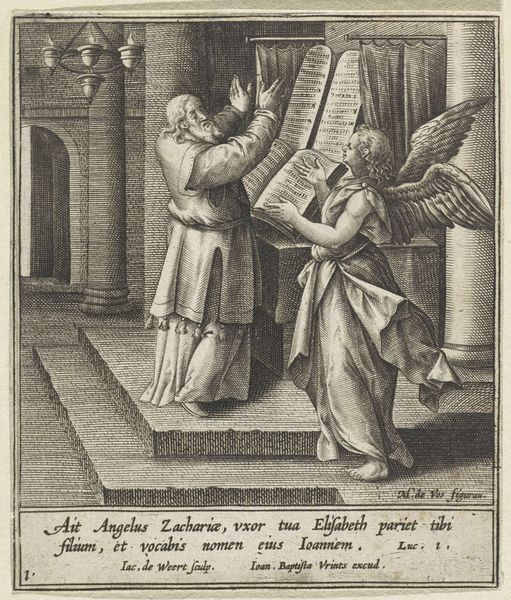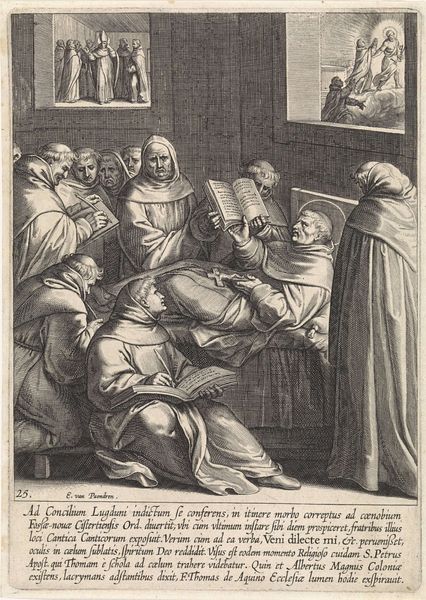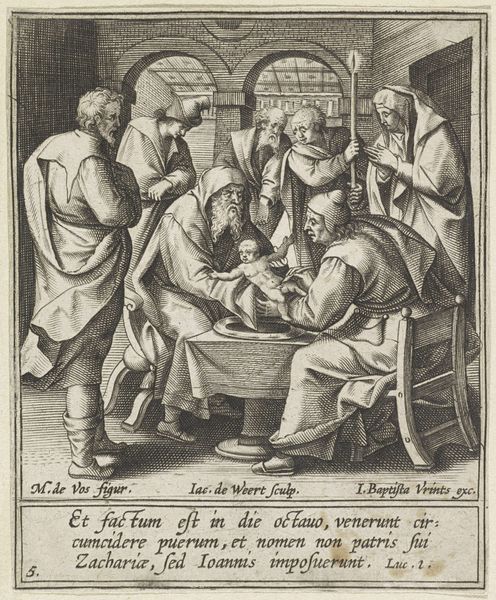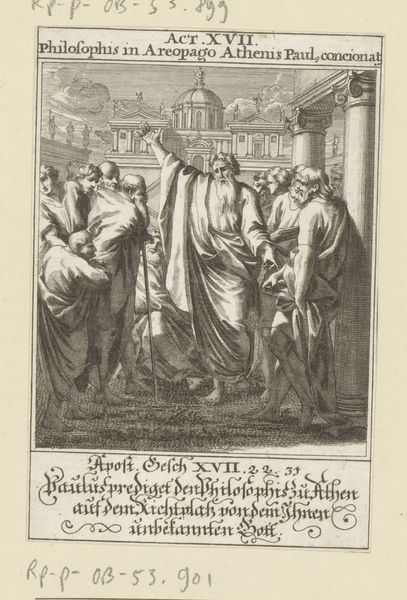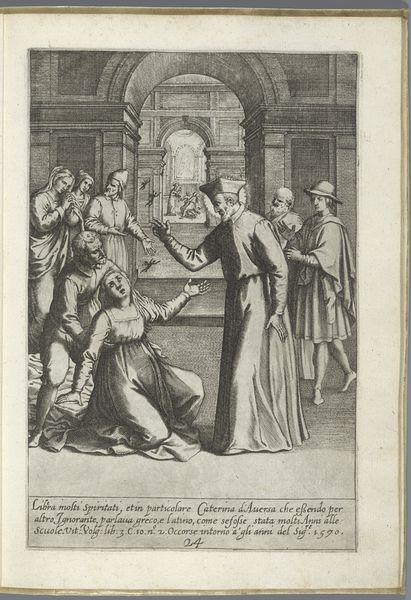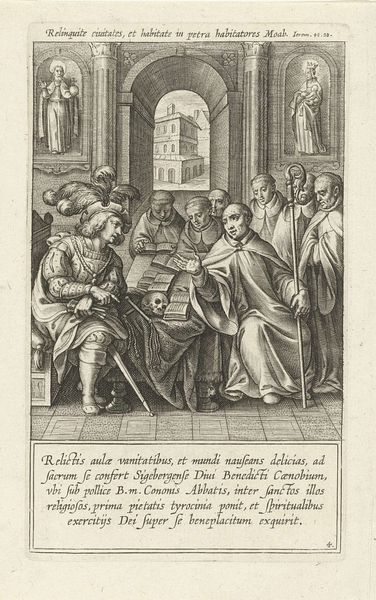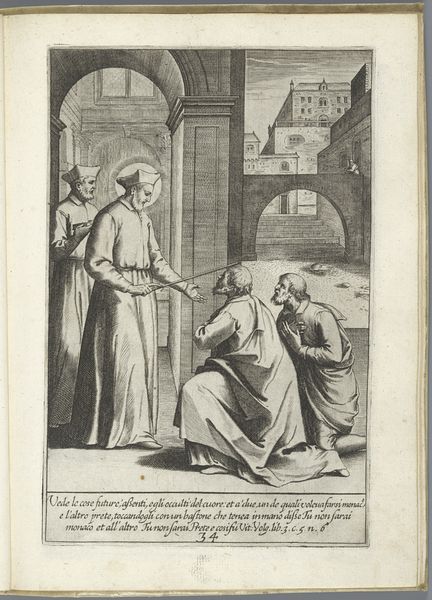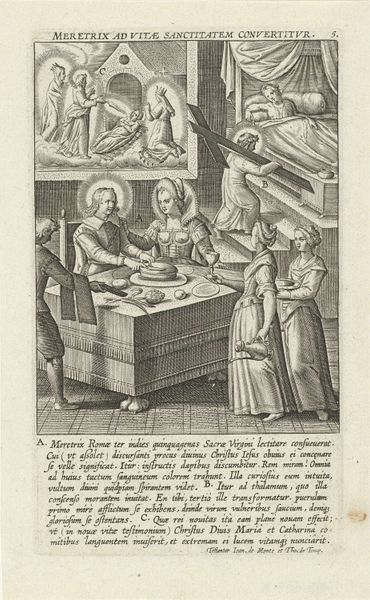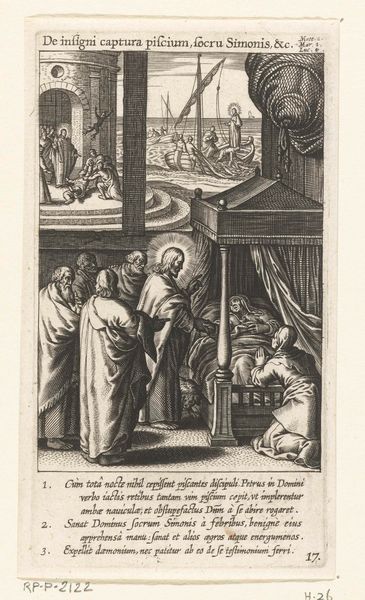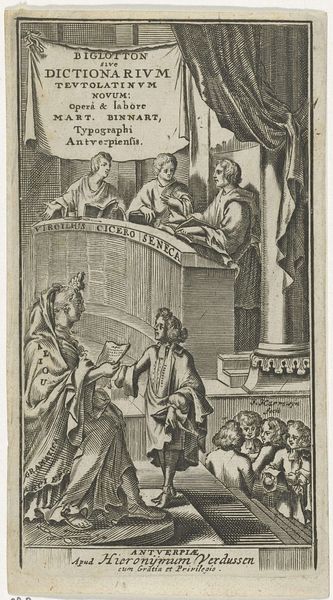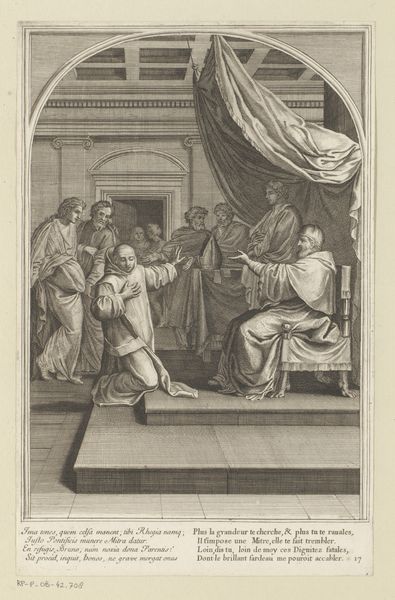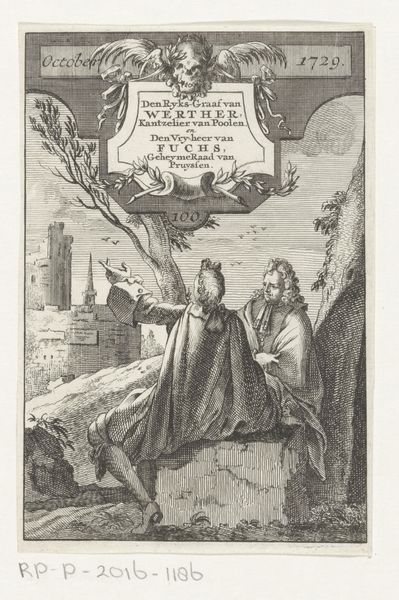
print, engraving
#
narrative-art
# print
#
old engraving style
#
mannerism
#
figuration
#
history-painting
#
engraving
Dimensions: height 106 mm, width 91 mm
Copyright: Rijks Museum: Open Domain
Editor: Here we have "Naamgeving van Johannes de Doper" or "Naming of John the Baptist," an engraving by Jacob de Weert dating from between 1580 and 1600. It's quite intricate, almost theatrical, with everyone seemingly caught in mid-gesture. How do you interpret this work? Curator: It's fascinating to see how de Weert uses the story of John the Baptist's naming to address broader societal themes. Note how the composition subtly emphasizes the power dynamics at play. The patriarchal figure on the right dictates the name, silencing the mother, embodying the era’s gendered power structures. What strikes you about the figures’ postures? Editor: They do seem very deliberate, almost staged. The man on the right, he seems so certain. Is it possible that De Weert critiques male authority through this figure? Curator: Precisely! We can examine this work through a lens of feminist art history. Consider how the male figures are actively participating, asserting their presence and influencing the narrative, while the female figure stands passively, her role seemingly confined to observation. How might that comment on women's roles in 16th-century society? Editor: I never considered it like that before! The passivity and activity really stand out now. It seems he's placing them into categories dictated by society. Curator: Absolutely. This engraving gives us an opportunity to critically assess the social structures of the time and to examine the historical roots of contemporary issues relating to equality and power. De Weert’s art is not simply illustrating a biblical scene, but reflecting—and perhaps even questioning—the dominant ideologies of his era. What have you found most revealing in our analysis? Editor: I've realised art provides commentary on culture as much as depicting events, allowing historical conversation about social justice, like gendered dynamics in this engraving. Curator: Indeed. And art can be a tool to reshape the power dynamics that influence art history, inviting conversations beyond the visual to encompass broader social topics.
Comments
No comments
Be the first to comment and join the conversation on the ultimate creative platform.
